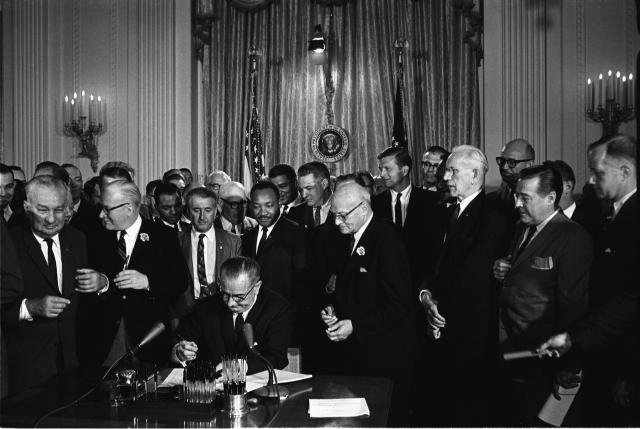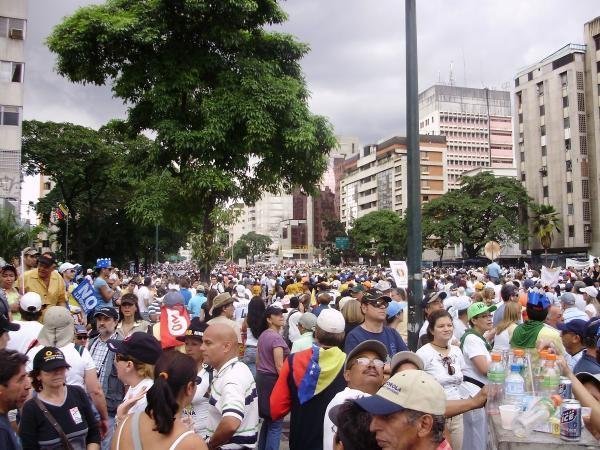The Middle East, a region historically fraught with political, ethnic, and religious tensions, is once again at the forefront of global concerns. In recent months, geopolitical developments have escalated, leading to increased instability and potential ramifications for global security, energy markets, and international alliances. From escalating violence in Gaza to shifting alliances between Arab nations and Israel, to the ongoing conflict in Syria, the region is facing an uncertain and volatile future.
In this update, we’ll examine the latest developments driving tensions in the Middle East, the geopolitical forces at play, and the potential consequences for both regional and global stability.
1. Rising Tensions in Gaza: The Israeli-Palestinian Conflict Intensifies
One of the most persistent and deeply-rooted sources of tension in the Middle East is the ongoing Israeli-Palestinian conflict. Over the past year, the situation in Gaza has become increasingly volatile, with intermittent outbreaks of violence and a growing humanitarian crisis.
Escalating Violence
The ceasefire that ended the May 2021 conflict between Hamas and Israel has proven fragile. In the wake of frequent military exchanges, both sides have suffered significant casualties, and the risk of a full-scale war remains high. Violent clashes have been driven by several factors, including disputes over Jerusalem, Israeli settlements in the West Bank, and the ongoing blockade of Gaza by Israel and Egypt.
- Rocket Attacks and Airstrikes: In 2023, violence has spiked again, with Hamas firing rockets into Israeli territory and the Israeli Defense Forces (IDF) retaliating with airstrikes targeting Hamas infrastructure. Civilian casualties on both sides, particularly in Gaza, continue to rise, exacerbating the already dire humanitarian situation.
- Humanitarian Crisis: Gaza, one of the most densely populated regions in the world, is facing a severe humanitarian crisis. According to the United Nations, more than two million people in Gaza live under poverty, with limited access to clean water, electricity, and medical care. The region’s infrastructure has been repeatedly destroyed in conflict, and rebuilding efforts have been hindered by the blockade.
International Involvement and Pressure
The Israeli-Palestinian conflict has drawn in international actors, each with their own interests and allegiances. Western nations, particularly the United States, continue to provide strong support for Israel, while many Arab nations have historically backed Palestinian sovereignty. However, recent shifts in diplomatic alignments are altering the dynamics.
- U.S. Policy: Under the Biden administration, the U.S. has reiterated its support for Israel’s right to self-defense, while also calling for an end to the violence and advocating for a two-state solution. However, U.S. diplomatic efforts to mediate peace talks have largely stalled, with little progress toward a lasting resolution.
- Arab States and Normalization: Several Arab nations, including the United Arab Emirates, Bahrain, and Sudan, have moved toward normalization of relations with Israel, driven in part by shared concerns over Iran’s growing influence in the region. These agreements, known as the Abraham Accords, have led to increased cooperation in areas such as trade, technology, and security. However, the broader Arab world remains divided, and the normalization process has not led to a major breakthrough on the Israeli-Palestinian front.
The Role of Iran
Iran’s involvement in the Israeli-Palestinian conflict—through its support for groups like Hamas and Hezbollah—remains a significant factor in the region’s instability. Tehran has used its influence to rally opposition to Israel, while also supporting armed groups in Syria, Lebanon, and Iraq. This makes any peace efforts between Israel and Palestine even more complex, as Iran works to expand its geopolitical footprint and challenge U.S. and Israeli interests.
2. The Iran Factor: Nuclear Talks and Regional Power Struggles
The role of Iran in regional geopolitics has been a significant source of tension for years, particularly in its nuclear ambitions and its involvement in proxy conflicts across the Middle East.
Nuclear Program and International Diplomacy
Iran’s nuclear program has been a point of contention for the international community for over a decade. While the 2015 Joint Comprehensive Plan of Action (JCPOA), also known as the Iran nuclear deal, was hailed as a major diplomatic achievement, its unraveling after the U.S. withdrew from the agreement in 2018 has fueled tensions.
- Renewed Talks and Setbacks: In 2023, negotiations aimed at reviving the JCPOA have faced significant setbacks, largely due to distrust between Tehran and the West. Iran has continued to advance its nuclear program, enriching uranium to levels that bring it closer to the threshold for developing nuclear weapons, while the U.S. and European nations have imposed increasingly stringent sanctions.
- Regional Arms Race: As Iran edges closer to acquiring nuclear capabilities, regional powers, notably Saudi Arabia and Israel, have expressed concerns about the potential for a nuclear arms race in the Middle East. Israel, in particular, has vowed to prevent Iran from obtaining nuclear weapons, even if it requires military intervention.
Iran’s Proxy Influence and Proxy Conflicts
Beyond its nuclear program, Iran has been deeply involved in regional proxy conflicts, supporting militant groups in Syria, Iraq, Lebanon, and Yemen. These efforts are part of Iran’s broader strategy to expand its influence and counter U.S. and Saudi dominance in the region.
- Syria: Iran has played a key role in supporting the regime of Bashar al-Assad in Syria’s civil war, providing military and financial support to his forces. This has increased Iran’s foothold in Syria, further complicating efforts to end the war and create a stable political solution.
- Yemen: In Yemen, Iran supports the Houthi rebels, who are fighting against a Saudi-led coalition. The conflict has resulted in one of the worst humanitarian crises in the world, with millions of people displaced and facing starvation.
- Iraq and Lebanon: Iran has significant influence in both Iraq and Lebanon, through groups like Hezbollah in Lebanon and various militias in Iraq. This influence has raised concerns for both regional stability and the security of U.S. interests in the region.
3. The Saudi-Iran Rivalry: A Deepening Divide
One of the defining geopolitical rivalries in the Middle East is the competition between Sunni-majority Saudi Arabia and Shia-majority Iran. The two countries have long been at odds, each vying for regional dominance, with the conflict often manifesting in proxy wars, diplomatic standoffs, and a battle for influence over Arab states.
Shifting Alliances and Attempts at Diplomacy
In recent years, there have been some signs of a potential thaw in relations between Saudi Arabia and Iran. Backchannel negotiations have taken place, and in 2023, both countries agreed to restore diplomatic ties after years of tensions. While this represents a significant step toward easing regional tensions, deeper issues remain unresolved, particularly Iran’s influence in Yemen, Syria, and Iraq.
- The Saudi Perspective: For Saudi Arabia, Iran’s influence in neighboring countries is seen as a direct threat to its security. Riyadh has made significant investments in countering Iran’s regional ambitions, including backing the Yemeni government in its fight against the Houthis and supporting anti-Iranian factions in Syria and Iraq. The Saudi leadership is also deeply concerned about Iran’s nuclear ambitions.
- Iran’s Perspective: For Iran, its regional activities are viewed as a defensive strategy to counter U.S. and Saudi influence. Tehran sees itself as the natural leader of the Shia Muslim world, and its alliances with groups like Hezbollah and the Houthis are central to its regional strategy.
Energy and Economic Impacts
The rivalry between Iran and Saudi Arabia has significant implications for global energy markets. Both countries are major oil producers, and fluctuations in oil prices often result from their actions on the global stage. Iran’s attempts to bypass sanctions and maintain its oil exports have contributed to tensions, while Saudi Arabia’s leadership in OPEC often places it at odds with Iran’s interests.
4. The Syrian Quagmire: A Stalemate with Global Consequences
Syria’s civil war, now in its 13th year, continues to be a source of regional instability. The war, which began as a popular uprising against President Bashar al-Assad’s regime, has morphed into a complex conflict involving international powers, including the U.S., Russia, Turkey, and Iran.
The Russian and Turkish Involvement
Russia has been a key ally of Assad, providing military support and ensuring that his regime remains in power. This has shifted the balance of power in the region, with Russia now playing a more prominent role in Middle Eastern geopolitics.
Meanwhile, Turkey has supported opposition forces in northern Syria and is involved in a complex military presence near its borders. Turkish concerns over Kurdish autonomy in Syria and Iraq have led to military operations in the region, further complicating the conflict.
The U.S. and the Fight Against ISIS
The U.S. maintains a military presence in Syria, primarily focused on preventing the resurgence of ISIS and supporting Kurdish-led forces in the fight against the extremist group. While ISIS has been largely defeated, the U.S. presence in Syria has drawn criticism from both Russia and Turkey, and the situation remains precarious.
5. Conclusion: A Volatile Region with Global Implications
Tensions in the Middle East are at a high point, driven by a combination of longstanding conflicts, shifting alliances, and external interventions. The situation remains fluid, with potential flashpoints that could spill over into broader regional or global conflicts.
As diplomatic efforts to resolve key issues like the Israeli-Palestinian conflict, Iran’s nuclear ambitions, and the Syrian civil war continue to stall, the international community faces the challenge
of balancing strategic interests, humanitarian concerns, and regional stability.
For the U.S. and other global powers, the Middle East will continue to be a key arena of foreign policy, requiring careful management of alliances, economic interests, and security challenges. The region’s future remains uncertain, but one thing is clear: the Middle East’s geopolitical landscape will continue to evolve in ways that will have profound implications for global peace and security.




